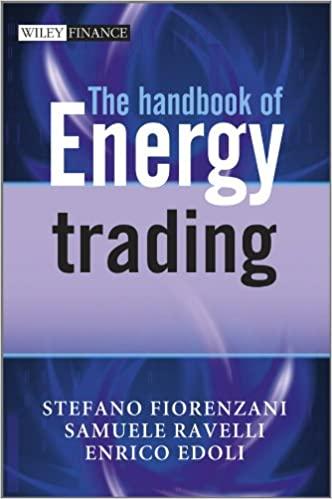Question
5. Solving for a firm's WACC A firms weighted average cost of capital (WACC) is used as the discount rate to evaluate various capital budgeting
5. Solving for a firm's WACC
A firms weighted average cost of capital (WACC) is used as the discount rate to evaluate various capital budgeting projects. However, remember the WACC is an appropriate discount rate only for a project of average risk.
Analyze the cost of capital situations of the following company cases, and answer the specific questions that finance professionals need to address.
The case of Cold Goose Metal Works
Cold Goose Metal Works has a target capital structure of 58% debt, 6% preferred stock, and 36% common equity. It has a before-tax cost of debt of 11.1%, and its cost of preferred stock is 12.2%.
If Cold Goose can raise all of its equity capital from retained earnings, its cost of common equity will be 14.7%. However, if it is necessary to raise new common equity, it will carry a cost of 16.8%.
If its current tax rate is 40%, how much higher will Cold Gooses weighted average cost of capital (WACC) be if it has to raise additional common equity capital by issuing new common stock instead of raising the funds through retained earnings? (Note: Round your answer to two decimal places.)
1.01%
0.68%
0.83%
0.75%
The case of Red Oyster Seafood Company
The CFO of Red Oyster Seafood Company is trying to determine the companys WACC. He has determined that the companys before-tax cost of debt is 10.20%. The company currently has $750,000 of debt, and the CFO believes that the book value of the companys debt is a good approximation for the market value of the companys debt.
| The firms cost of preferred stock is 11.40%, and the book value of preferred stock is $45,000. | |
| Its cost of equity is 14.30%, and the company currently has $500,000 of common equity on its balance sheet. | |
| The CFO has estimated that the firms market value of preferred stock is $78,000, and the market value of its common equity is $880,000. |
If Red Oyster is subject to a tax rate of 40%, Red Oyster Seafood Companys WACC is . (Hint: Round your answer to two decimal places.)
The case of Green Penguin Pencil Company
Green Penguin Pencil Company is considering a new project that will require an initial investment of $4 million. It has a target capital structure of 35% debt, 2% preferred stock, and 63% common equity. Green Penguin Pencil has noncallable bonds outstanding that mature in five years with a face value of $1,000, an annual coupon rate of 10%, and a market price of $1,050.76. The yield on the companys current bonds is a good approximation of the yield on any new bonds that it issues. The company can sell new shares of preferred stock that pay an annual dividend of $8 at a price of $95.70 per share. Assume that Green Penguin Pencil new preferred shares can be sold without incurring flotation costs.
Green Penguin Pencil does not have any retained earnings available to finance this project, so the firm will have to issue new common stock to help fund it. Its common stock is currently selling for $33.35 per share, and it is expected to pay a dividend of $1.36 at the end of next year. Flotation costs will represent 3% of the funds raised by issuing new common stock. The company is projected to grow at a constant rate of 9.2%, and they face a tax rate of 40%.
Green Penguin Pencils WACC for this project will be: (Hint: Round your answer to two decimal places.)
8.35%
9.92%
9.40%
10.44%
Step by Step Solution
There are 3 Steps involved in it
Step: 1

Get Instant Access to Expert-Tailored Solutions
See step-by-step solutions with expert insights and AI powered tools for academic success
Step: 2

Step: 3

Ace Your Homework with AI
Get the answers you need in no time with our AI-driven, step-by-step assistance
Get Started


